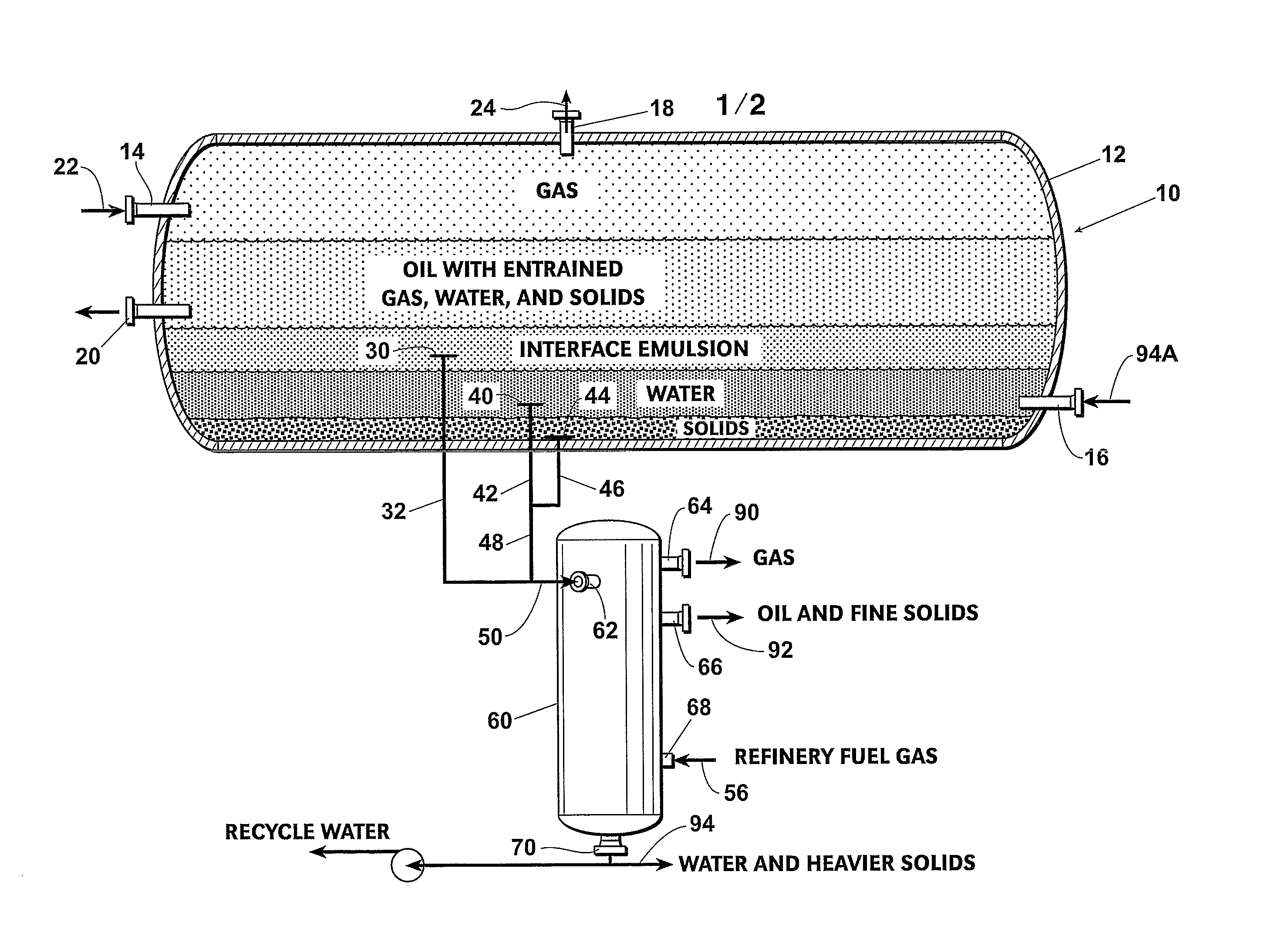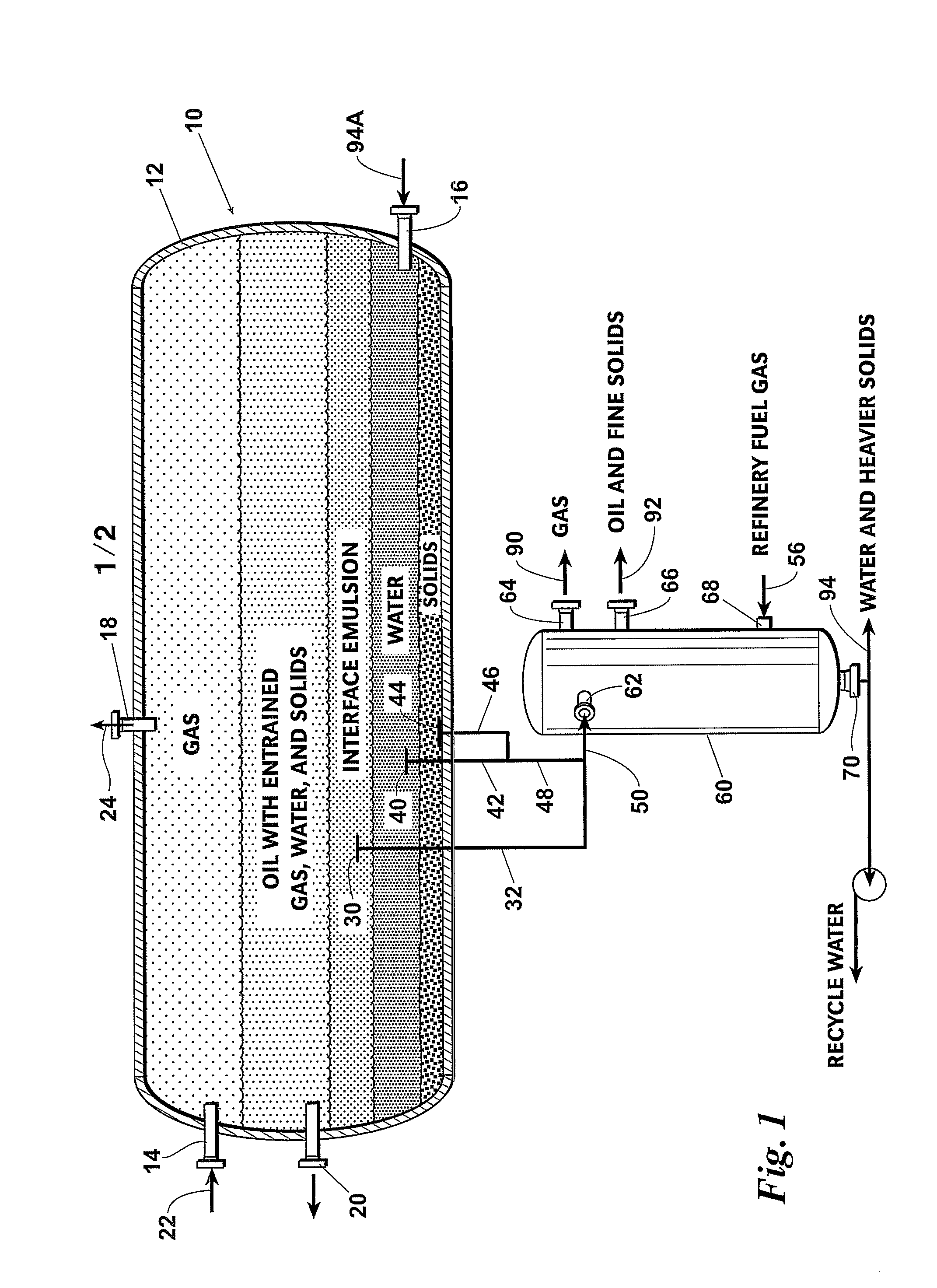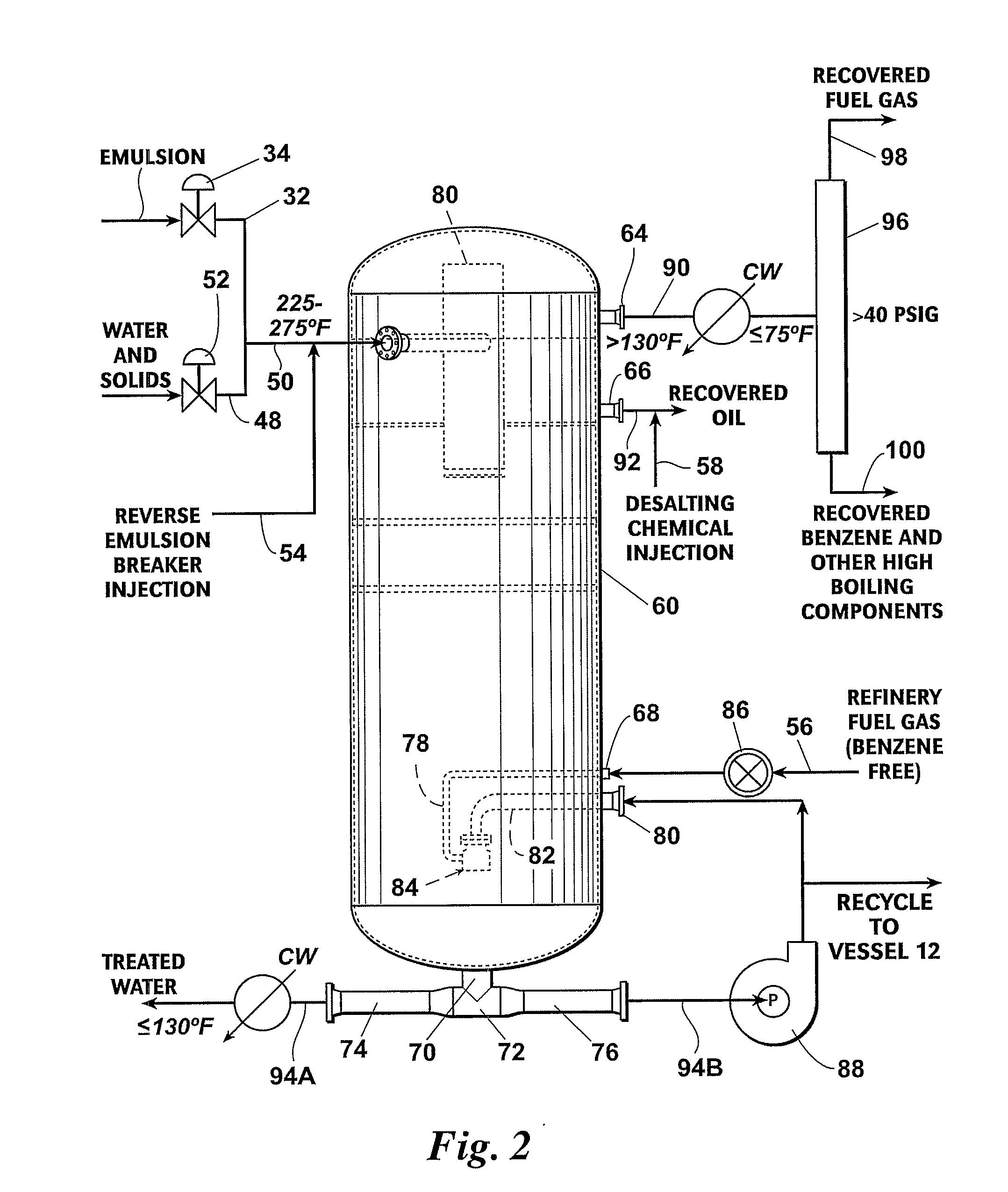Method to Process Effluent Brine and Interface Rag from an Oil Dehydration/Desalting System
a technology of oil dehydration/desalting and effluent brine, which is applied in the direction of multi-stage water/sewage treatment, separation process, treatment water nature, etc., can solve the problems of presenting challenges and costs to operators, affecting the quality of the water, and affecting the removal of solids and emulsions from the vessel
- Summary
- Abstract
- Description
- Claims
- Application Information
AI Technical Summary
Benefits of technology
Problems solved by technology
Method used
Image
Examples
Embodiment Construction
[0014]The present invention discloses a method for continual processing of interface emulsion, water, and solids from a separator vessel such as an oil dehydration vessel or an oil desalting vessel. Referring first to FIG. 11, a system 10 comprising a separator vessel 12 is connected by conventional piping to a gas flotation cell 60. The separator vessel 12 is of a type well-known in the art and commonly used in crude oil production and refining for dehydration and desalting of crude oil. Gas flotation cell 60 is also of a type well-known in the art and commonly used for cleaning the water being held or processed in separator vessel 12. A gas flotation cell suited for use in the method described herein is that of Frankiewicz et al., U.S. Pat. No. 7,157,007. In a preferred embodiment of the method, a National Tank Company Dual Polarity® Electrostatic Treater was used as the vessel 12 and a National Tank Company Tridair™ Versaflo™ vertical gas induced flotation cell was used as the ce...
PUM
| Property | Measurement | Unit |
|---|---|---|
| temperature | aaaaa | aaaaa |
| temperature | aaaaa | aaaaa |
| temperature | aaaaa | aaaaa |
Abstract
Description
Claims
Application Information
 Login to View More
Login to View More - R&D
- Intellectual Property
- Life Sciences
- Materials
- Tech Scout
- Unparalleled Data Quality
- Higher Quality Content
- 60% Fewer Hallucinations
Browse by: Latest US Patents, China's latest patents, Technical Efficacy Thesaurus, Application Domain, Technology Topic, Popular Technical Reports.
© 2025 PatSnap. All rights reserved.Legal|Privacy policy|Modern Slavery Act Transparency Statement|Sitemap|About US| Contact US: help@patsnap.com



